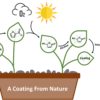The COVID-19 pandemic, bigger and more frequent wildfires, devastating floods, and powerful storms have become unfortunate facts of life. With each disaster, people depend on the emergency response of governments, nonprofit organizations, and the private sector for aid when their lives are upended. However, a complicating factor in delivering that aid is that people tend to disperse with such disasters.
Recently, a team led by Jianxi Gao, assistant professor of computer science at Rensselaer Polytechnic Institute, and Qi “Ryan” Wang, associate professor of civil and environmental engineering at Northeastern University, formulated a method to predict human movement during large-scale extreme events with the goal of enabling more effective emergency responses. The model also revealed great disparity in movement among different economic groups.
“Despite many possible variables, we found that changes in human mobility behavior during various extreme events exhibit a consistent hyperbolic decline,” said Gao. “We call it ‘spatiotemporal decay.'”
Typically, people’s movements follow predictable patterns. When an extreme event disrupts the pattern, scientists refer to it as a “mobility perturbation.” For example, people may stop commuting to work, or they may change their route, or even evacuate to a shelter. Not only do these mobility perturbations cause challenges when delivering aid, but they also lead to financial, medical, and quality of life repercussions. The nature, extent, and duration of mobility perturbations vary widely.
Gao’s team tracked the anonymous movements of 90 million people in the United States over the course of six large-scale disasters including wildfires, tropical storms, winter freezes, and pandemics in order to develop a unified model.
“Our model reveals the underlying uniformity across variables by incorporating heterogeneity across space and over time,” said Gao. “We found strong regularities in how much mobility behavior changes following extreme events and in how fast mobility behavior returns to normal, allowing us to predict complex human behaviors during large-scale crises.”
Gao’s team found that people living close to the nucleus of the crisis—ground zero, or where a storm hits—limit their mobility significantly and quickly. Those living further away do not alter their movement patterns as drastically. This is what is referred to as “spatial decay.” Over time, mobility patterns either return to normal, inch towards normal, or become even more perturbed. The team accounted for these variables by considering “temporal decay,” as well.
When the team applied the model to the COVID-19 pandemic, it revealed great differences in movement among economic groups, which may help to explain the different infection rates. People from wealthy areas were more able to immediately reduce their mobility and maintain that change longer. People living in lower income areas exhibited a faster and greater hyperbolic decay.
“In other words, wealthier people were able to socially distance,” Gao said. “Lower income people were forced to return to work.”
“If events of recent years have taught us anything, it is that we must do our best to prepare for crises,” said Curt Breneman, Dean of the Rensselaer School of Science. “This work by Dr. Gao and his team can inform enhanced and proactive emergency response planning to mitigate future extreme events. It also shines a light on persistent social inequities that we must find new ways to address.”
The research is published in Proceedings of the National Academy of Sciences.
More information:
Weiyu Li et al, A spatiotemporal decay model of human mobility when facing large-scale crises, Proceedings of the National Academy of Sciences (2022). DOI: 10.1073/pnas.2203042119
Provided by
Rensselaer Polytechnic Institute
Citation:
Prediction of human movement during disasters could allow for more effective emergency response (2022, August 10)



